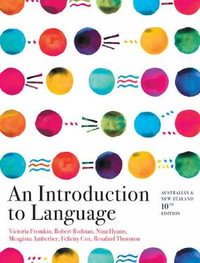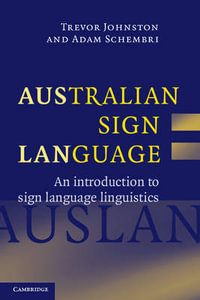| Acknowledgments | p. x |
| Introduction: language from the body | p. 1 |
| The universe of gesture | p. 5 |
| Signed and spoken languages | p. 5 |
| Speech as gesture | p. 8 |
| Signing as gesture | p. 11 |
| Semantic phonology | p. 12 |
| Language as gesture | p. 16 |
| An evolutionary perspective on language | p. 17 |
| Grasping syntax | p. 21 |
| The nature of gesture | p. 27 |
| Comparing sign and speech | p. 28 |
| What is gesture? | p. 38 |
| Speech as gesture | p. 42 |
| The two faces of gesture | p. 46 |
| Perceptual categorization | p. 48 |
| The role of motor actions in perception | p. 50 |
| Global mappings, preconcepts, and presyntax | p. 53 |
| Event cognition and language | p. 54 |
| Visible gestures: seeing language | p. 57 |
| Are signed and spoken languages differently organized? | p. 64 |
| Language from a different part of the body | p. 64 |
| Describing signed language | p. 69 |
| Seeking organizational similarity at the sublexical level | p. 71 |
| Looking at differences | p. 80 |
| Summary | p. 88 |
| Is language modular? | p. 92 |
| Modular versus associationist theories of language | p. 92 |
| Modularity and cerebral localization | p. 94 |
| Plasticity and associationism | p. 95 |
| Linguistic modality and modularity | p. 97 |
| "Spatial" syntax and the left brain | p. 100 |
| Simultaneity and sequentiality: modules and isomorphs | p. 102 |
| Coarticulation in speech and sign | p. 106 |
| Modularism versus associationism | p. 115 |
| Do we have a genetically programmed drive to acquire language? | p. 121 |
| Universal grammar | p. 122 |
| Are there genetically determined milestones in language development? | p. 123 |
| What must be mastered? Structure and plasticity | p. 126 |
| The critical period for acquisition and species specificity | p. 127 |
| A grammar gene? | p. 132 |
| Past tense and semimodularity | p. 133 |
| Distributed neuronal circuits and neural Darwinism | p. 139 |
| The nature of a gestural acquisition theory | p. 140 |
| Language from the body politic | p. 143 |
| Language from a special part of the universe | p. 143 |
| Movement, brain, society, language | p. 149 |
| The origin of syntax: gesture as name and relation | p. 161 |
| The system of language | p. 161 |
| The second subsystem | p. 166 |
| Language from the whole brain | p. 167 |
| Sign languages and manual gestures | p. 174 |
| Gestural syntax | p. 176 |
| The tree in the seed | p. 178 |
| The opening of the seed | p. 182 |
| Language coevolving with culture | p. 186 |
| Elaborating the pattern | p. 187 |
| Gesture and iconicity | p. 191 |
| Signaling syntax | p. 194 |
| Language from the body: an evolutionary perspective | p. 198 |
| The hominid adaptive complex | p. 199 |
| Darwinian theory: gradualism, incrementalism, and punctuation | p. 203 |
| Evolution of cerebral asymmetry | p. 209 |
| The hominid life style | p. 214 |
| The ancestral stock | p. 215 |
| Hominid social behavior | p. 217 |
| Origin and evolution of language | p. 223 |
| Language and longevity as evolutionary problems | p. 230 |
| Language from the body: final metaphors | p. 234 |
| References | p. 237 |
| Author index | p. 255 |
| Subject index | p. 259 |
| Table of Contents provided by Syndetics. All Rights Reserved. |
























